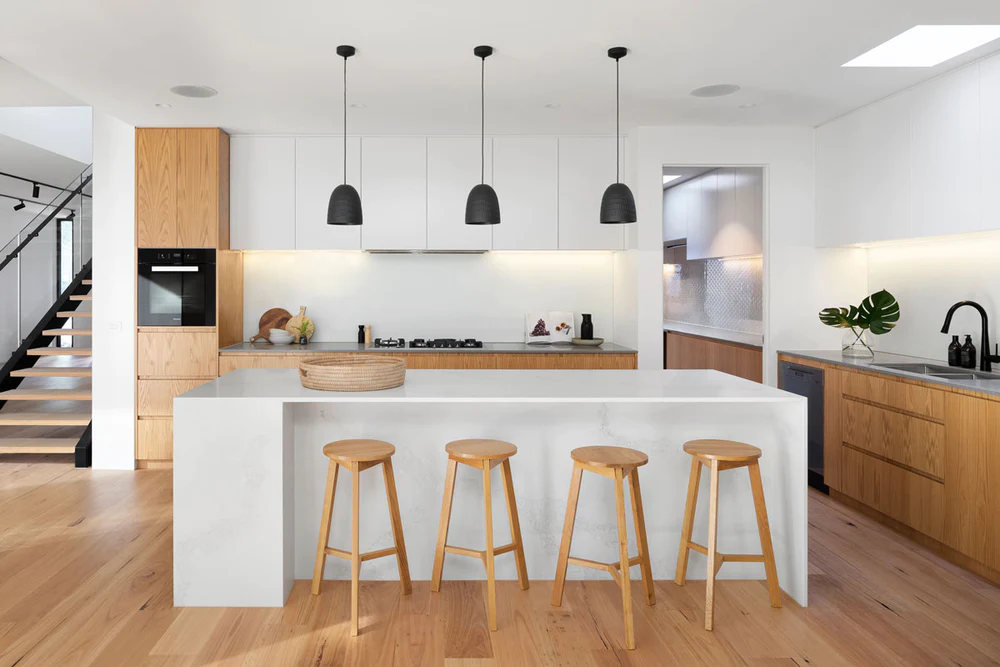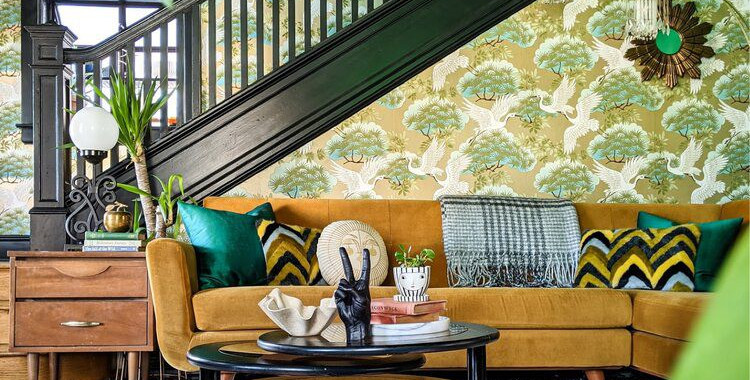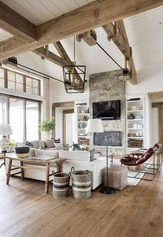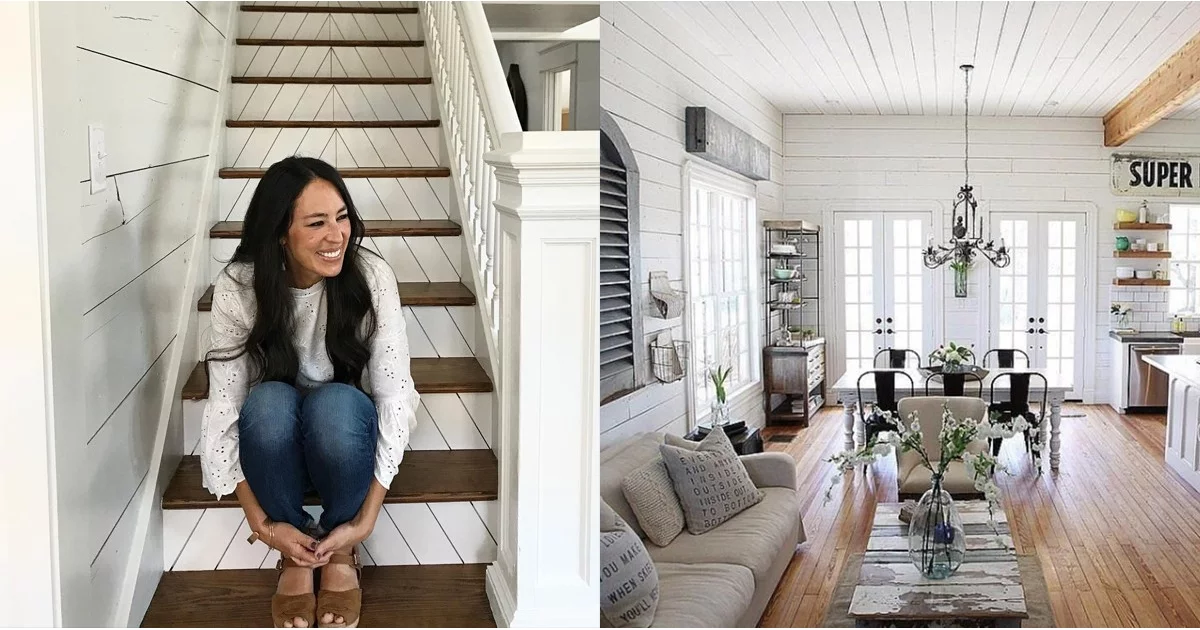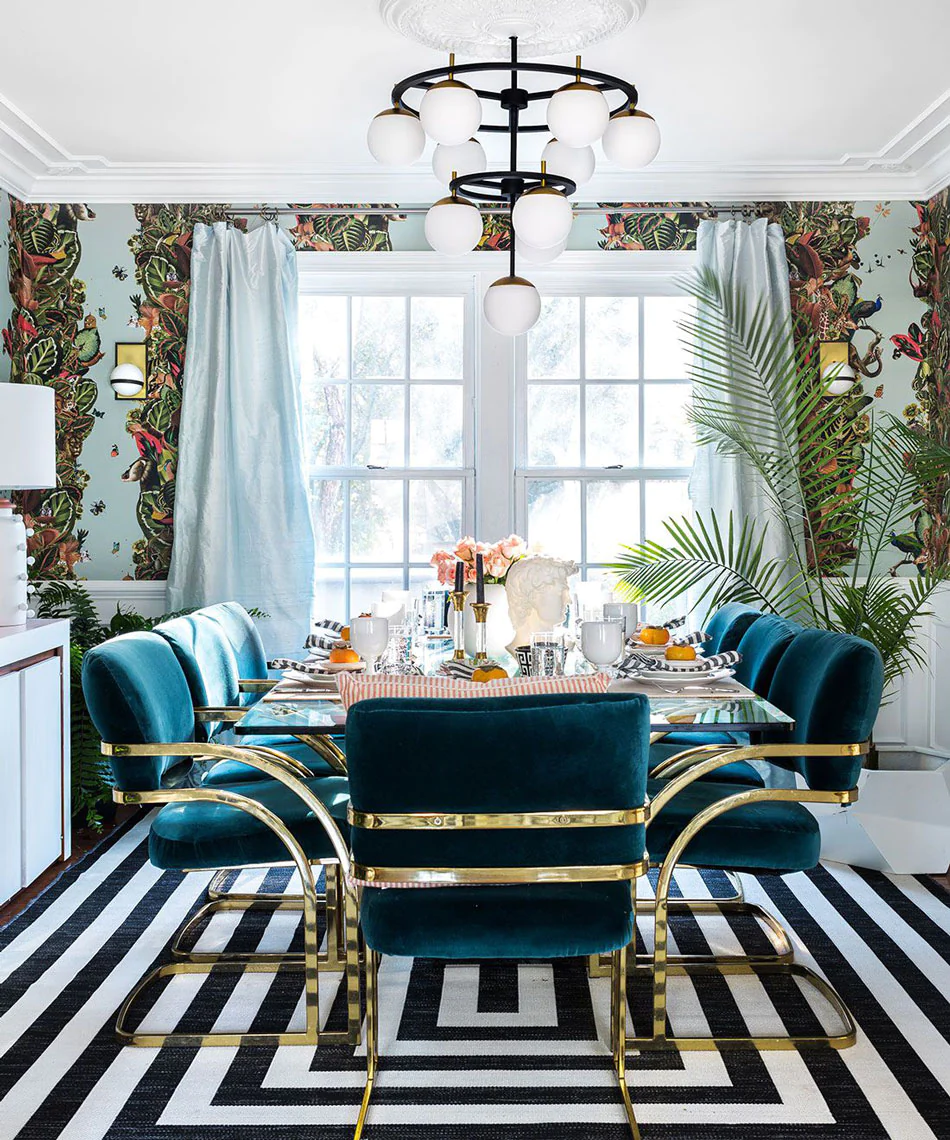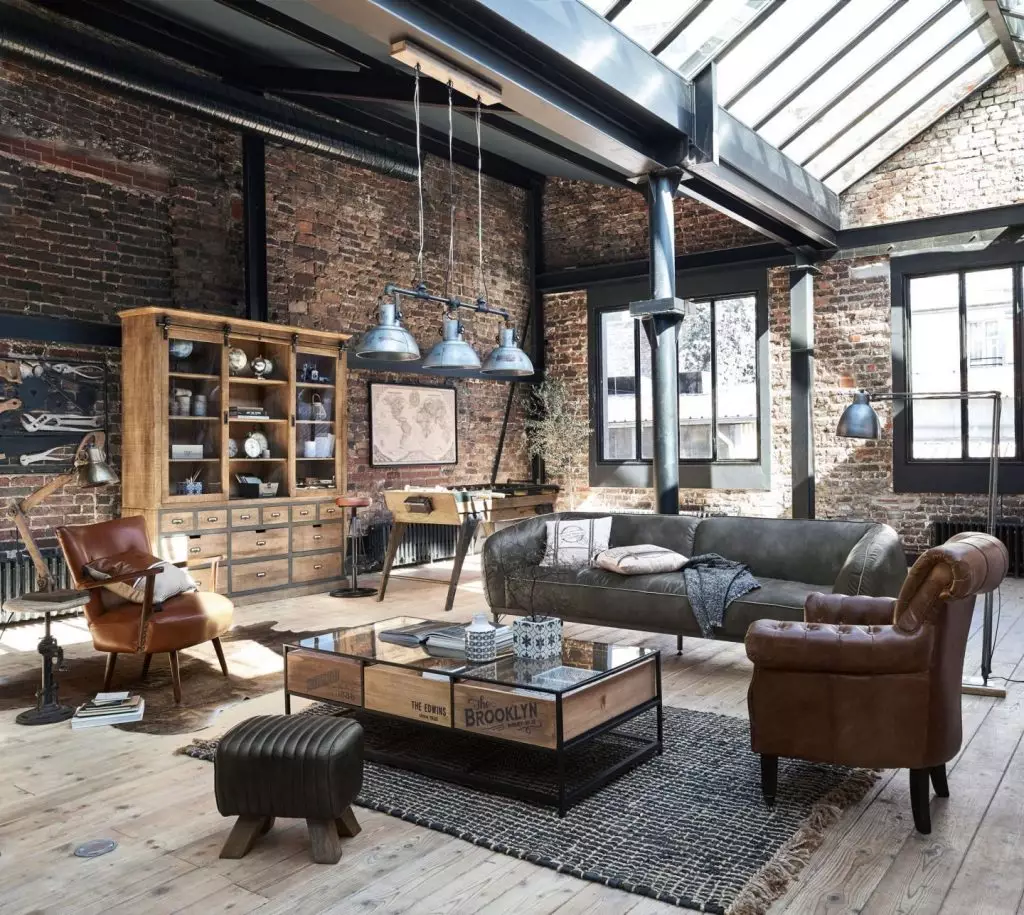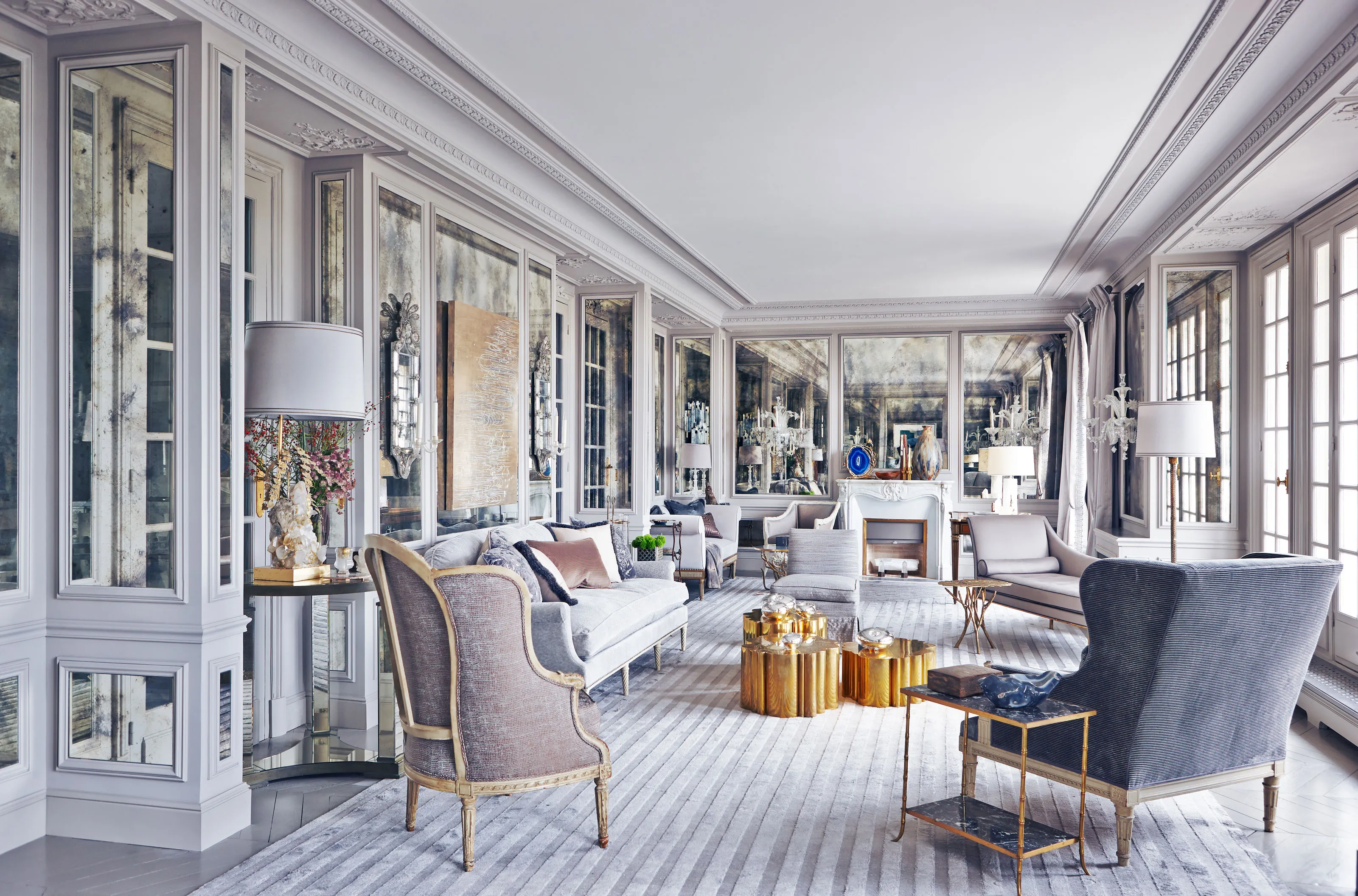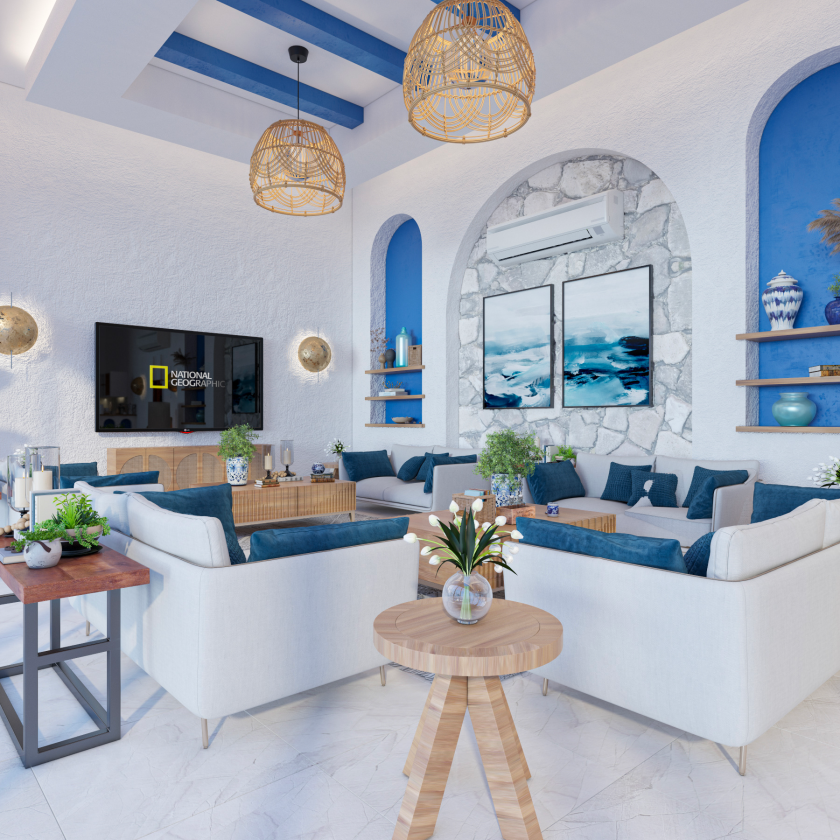Your Style, Defined!
- Tera Smith
- May 18, 2023
- 11 min read
Updated: Sep 25, 2024
Ever wonder what designers and stylists mean when they say Traditional, Contemporary, Transitional, Modern, or Scandinavian? To save you a google deep-dive, we have created a listing of what each term means, and examples so you can find your perfect style! Each week for #TrendingTuesday, we will be covering a new style, so check in weekly for all 20 styles :)
Transitional: This is our personal favorite here at Smith Interior Design. We specialize in this design style. Transitional design is what we like to call the happy medium of interior design styles. This is the style for you if traditional design is too old school, but contemporary is too modern. Transitional is the perfect mix of traditional elegance with contemporary lines and textiles. In addition, transitional interiors keep accessories to a minimum. It’s important to let the furniture and the textiles do the talking. Take advantage of area rugs, throw pillows, and blankets to accessorize. Perhaps the most aesthetically pleasing aspect of the transitional design style is the mix of masculine and feminine. Curved furniture and finishes like wood, rattan, steel, and lacquer are common elements. Furthermore, the combination of two very different styles creates an interesting and welcoming home design perfect for entryways and other rooms.
Do you like transitional? Could you come home to this bedroom each night?
Yes!
No, what else do you have?
Traditional: When it comes to defining different interior design types one of the most well-known styles is traditional interior design. Traditional interiors use tables and chairs made from dark wood that is ornately detailed. Traditional design draws its inspiration from 18th & 19th Century England and France. This explains why it’s common to find expensive textiles like silk, velvet, and linen used everywhere from upholstery to window treatments. Fabrics also feature a variety of different patterns. A few popular patterns include; damask, florals, stripes, and plaids, for example. Furthermore, traditional homes also like to bring in a sense of glam with crystal chandeliers. European décor heavily influences traditional interiors. Most traditional homes have a very neutral color palette with pops of color brought in with oil paintings or floral arrangements. If you’re not into ‘matchy-matchy’ traditional may not be your cup of tea. Above all, consistency is key so it’s common to find matching furniture sets.

Contemporary: When you look at interior design styles throughout history contemporary interior design is the one style that is always evolving. The contemporary design style will most likely continue to change over the course of the twenty-first century. Contemporary refers to anything of the present moment. This unique interior design style borrows from various time periods which creates an environment fit to last a lifetime. Contemporary interior design is a sleek and simple space. It uses different features like metals for the furniture and open layouts to create an interesting and distinct space. Typical contemporary furniture shows exposed legs and clean lines to give a light and airy feel. It’s common to see materials like metal and glass used because of their light-reflecting properties. This look is the ultimate mix of house décor styles. In addition, neutral color palettes are the most common for contemporary design with textured fabrics to create interest. Thus, creating the perfect luxury modern interior.

Modern: We’re here to clear up the difference between modern and contemporary. In spite of their number of similarities, there are a few big signs that you’re looking at a modern interior. Modern design refers to a specific time period while contemporary design is ever-evolving. Modern interior design came on the radar in the early to mid 20th century. Due to the mix of Scandinavian, mid-century modern, and post-modern design, we have our current definition of modern. For example, furniture has clean lines with smooth, sleek surfaces. In particular metal, chrome, and glass are favorite choices among designers. However, with modern interiors, décor is kept minimal. They tend to ditch the knick-knacks and use art as the main décor. It’s common to see bold colorful accents in art and furniture in a mostly neutral space.
Mid-Century Modern: Next, we have a classic that seems to stay relevant no matter the decade. Mid-century interiors started in the 1950s and ’60s in post-war America. During this time the design industry was trying to break out of its traditional barriers and dive into the modern era. As a testament to this style’s timeless quality, there are still so many popular mid-century modern furniture pieces that are still used in our homes today. Keep an eye out for versions of iconic furniture such as the Eames lounger, the egg chair, or the wishbone chair. Mid-century modern homes have a breezy and seamless flow. They’ve always encouraged indoor-outdoor living. For this reason, sliding doors and picture windows are left bare to emphasize the connection to nature. Rich and luxurious woods such as teak, rosewood, and walnut are regularly used. In addition, accents of mustard yellow, chartreuse, or avocado are used for a pop of color. The mid-century revival we’re seeing in today’s design industry makes this popular interior design style more achievable than ever.
Which accent color is your favorite?
Mustard Yellow
Avocado Green
Sky Blue
Neutrals
Scandinavian: Scandinavian design is one of the easier interior design types to recognize. Think light, airy, and organic. Woods are almost always an ashy color in Scandinavian interiors. Nordic spaces give off a relaxing and inviting vibe. Key features include white walls, large mirrors, and cozy textiles. Furthermore, no Scandinavian space is complete without using the Danish concept of ‘hygge’ (a quality of coziness). Layered fabrics, glass furniture, clean lines, and textures certainly create the perfect cozy look.
*Scandinfornia: A sub-genre which is characterized for its simplistic Scandinavian vibes combined strong mid-century modern decor and organic and vintage elements. Scandifornian is often cloaked as minimal bohemian because it focuses on creating a calming and light space.
Eclectic: There are common misunderstandings when it comes to the eclectic design style. A few different key features identify eclectic interior design. Think of it as a high-energy collection of carefully selected pieces brought together to create a culture rich interior. Because of this, many think eclectic design has an anything-goes spirit. However, there is a fine line between layered and collected, and busy and distracting. Stick to a neutral color palette and use a select few accent colors to bring in the worldly vibe you’re looking for. With this in mind, the ideal eclectic interior balances color and texture. As a result, it’s the perfect blend of old and new.
Minimalism: Contemporary design and minimalist design have a lot of the same qualities. Both have uncomplicated forms, clean lines, and simple finishes. However, the minimalist decorating style is inspired by Japanese design and concentrates on the principle that less is more. In the end, minimalist design loves empty space. While most minimalist interiors have a neutral color scheme, primary colors can also be used as an accent color. Patterns are nowhere to be found and texture is a necessity. Because of the less is more philosophy you’ll find functional furniture is the most essential design element. Storage is also important in minimalist interior design. For this reason, furniture often doubles as hidden storage. For example, a coffee table that lifts up to reveal storage is one of the many creative solutions minimal interiors use. (Our Director of Operation's home is this style!)
What's your favorite aspect of Minimalism?
Built-In Storage
Open Space
Color Schemes
Clean Lines
Farmhouse: Our list of house decor styles wouldn’t be complete without modern farmhouse interior design. Joanna Gaines has earned the title as farmhouse queen, but even she is blending her farmhouse style into a more modern, and collected space. Modern farmhouse interiors have many characteristics of what we know as traditional farmhouse design. On the other hand, things become more simplified and clean without losing their character. Shiplap isn’t going anywhere and we still want to see barn doors galore. Modern updates like wide plank floors, open concept living, and sleek lighting are a few common identifiers of the modern farmhouse decorating style. Farmhouse interiors are also known for mixing metals. From gold to black to nickel, contrast is your friend. In addition, we love that this unique design style takes its connection to nature seriously. It’s essential to have raw wood elements and greenery that can be found in every room. Consequently, color palettes in modern farmhouse interiors are always on the neutral side. When you want to add that extra pop of color it’s important to pull from nature. For example, try adding sage green, or navy blue.
Bohemian: Similarly to the mid-century style, bohemian interiors are continuing to gain popularity. Because so many retailers are jumping on the boho train there is no better time than now to explore your bohemian side. In a nutshell, bohemian design is a free-spirited aesthetic that mixes different cultures and artistic expressions into an eclectic style that thinks outside the box. A laid back boho atmosphere places an emphasis on nature. However, it’s common to find bold patterns and bright colors for furniture and accents. When you walk into a home that has a bohemian design style you immediately feel immersed in another culture. Trinkets are displayed from travels and the whole vibe feels very nomadic. When we compare different design styles Bohemian is one of the few where order isn’t necessary. Mixing patterns and colors is encouraged. Likewise, we’re also seeing a trend of modern boho style. The addition of animal hides, metallic accents, and rich wood help modernize this collected style. We love that Bohemian style interiors use things in unconventional ways.

Shabby Chic: The shabby chic interior design style originated in the 18th century and transformed into the vintage-loving style it is today. Vintage furniture has always been at the core of shabby chic interior design. In fact, it was common for individuals to pass down furniture from one generation to the next. Then, each generation would put their own unique touch on it. Similar to its design sister, French country, shabby chic design has a very soft and feminine feel. In this feminine design style, shabby chic furniture is often painted or distressed. The pale color palettes with floral patterns pair perfectly with whitewashed floors and walls. Shabby chic interiors capture a cozy feeling in a home.
Coastal: You don’t have to live by the beach to appreciate the coastal interior design style. Not to be confused with nautical décor, the coastal decorating style is in another league of its own. A coastal space makes note of its natural environment. This can be seen through the color palette down to the materials used for furniture and accessories. Neutrals like whites are paired with beige to mimic the sand. Additionally, pops of blues to resemble the surf and sunny summer skies. Furthermore, coastal style homes should always feel bright and breezy. The intention is to feel like there is nothing between the indoors and outdoors. Because of this window treatments are kept to a minimum. A light sheer fabric blowing in the wind is sure to get the coastal vibe across. You won’t find anchors and seashells scattered everywhere for this interior design style. Instead, you’ll find blue glass vases, striped wallpaper, or abstract paintings that get the coastal feeling across. When it comes to identifying furniture in coastal interiors they have a very comfortable lived in feel. Painted and distressed furniture paired with wicker or jute makes for a match made in heaven. Because connecting to nature is so important with the coastal interior design style the addition of indoor plants is a must-have.
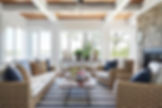
Hollywood Glam: Next on the list of decorating styles is Hollywood glam. This chic style has been most popular in California since the mid-twentieth century, dating all the way back to Hollywood’s golden age in the 1930s. Hollywood glam interiors are made up of a mix of art deco and mid-century modern. This is an interior design style that is here to be seen. High contrast color combinations were the popular choice for color schemes. Popular combinations are not only hot pink and green, but also black and white. In addition, over the top chandeliers paired with high gloss or mirrored furniture is also a common combination. The contrast gives off a certain high-glamour luxurious vibe. This design style is sexy and sophisticated at the same time.
Southwestern: The southwestern style as we know it today is not the same as it was when it first became noticeable in the design world. And it will continue evolving as the years pass by. Southwestern interiors gather their inspiration from the soft lines of adobe houses, Spanish textiles, ironwork and nature. Color pallets have various colors found in the American desert. Rust, terracotta, and cactus green, are a few favorites amongst designers. Whereas furniture is more on the heavy side, often adorning thick legs and bulky finishes. Additionally, texture is southwestern interior designs best friend. Leather and suede are the most common upholstery material.
Which room captures you most?
Casual Living Room
Master Bedroom With a View
Formal Family Room
Gourmet Eat-In Kitchen
Industrial: While one may argue that industrial interior design is trendy, it does have a past. When western European factories closed down at the end of the second industrial revolution it left many large vacant buildings behind. Population increase caused people to start converting industrial areas into residential neighborhoods. The industrial interior design style loves the art of exposed pipes and beams. Materials like brick and concrete are a great way to give the space a lot of character. You won’t hear the words “soft” or “intimate” used when describing this unique interior design style. Its masculine tendencies are tamed with the use of ample texture. Moreover, oversized artwork and cozy textiles are perfect additions. Furniture is often raw or unfinished and paired with antiques.
Rustic: When looking at rustic interior design it can be defined with a few basic signs. There will always be natural materials, industrial touches, and farmhouse charm all around. The rustic design style was originally born from inspirations of the Romantic movement. It focuses on the simplicity and effortless beauty of nature. For rustic interiors, it’s common to see living room design ideas focused around a central statement fireplace. The use of wood is softened by adding cowhides and sheepskin to create a cozy feeling. Fabrics don’t have loud patterns and texture is everything. Unexpected additions like an industrial pendant light add to the sophistication of what we know as rustic interior design.

French Country: Similar to many other interior design styles, French country interior design is a sophisticated blend of a few different style favorites. Shabby chic, farmhouse, and traditional all play a role in this design style. It starts with timeless antique furniture pieces. For example, a Louis VI chair updated with a modern print. Likewise, juxtapositions are found everywhere in this blended feminine neutral design style.
Mediterranean: Next, we look at another culturally rich interior design style, Mediterranean design. This decorating style started in countries north of the Mediterranean Sea. Spain, Greece, and Italy are still the main source of inspiration today. In like fashion to the typical architecture of those countries, it’s common to find arches, columns and interior balconies in Mediterranean homes. Furniture for this design style also reveals rich wood tones with ornate features. Mediterranean color palettes mimic those of the sea and sky while also incorporating warm hues like terracotta and yellow. Large picture windows embrace the outdoors with minimal sheer draperies to allow in as much light as possible.
Art Deco: We haven’t met a lot of people who have never heard of art deco interior design. This iconic early twentieth century design style originated in France then made its way into the US from the 1910s to the 1940s. The industrial revolution heavily inspired the art deco design style which is why metal was a popular material of choice during this time. It’s easy to identify pieces from the art deco style because it typically has pointed edges and jagged corners. Oversized furniture was common from armories to sofas. Today, our favorite place to go for art deco design inspiration has to be right here in Florida. Miami Beach is a great place to go to see the art deco interior design style.
What's your go-to Art Deco style?
Feminine Art Deco
Natural Art Deco
Miami Art Deco
Masculine Art Deco
Asian Zen: Ever heard of feng shui? You can bet you’ll find that philosophy utilized in this types of house décor styles. Asian Zen interiors are originally rooted from contemporary design. They focus on sleek lines, interesting shapes, and a relaxing atmosphere. As a result, references to nature are essential in creating the ultimate zen space. Asian interiors are often asymmetrical and use circles more often than squares. Curtain walls or door panels are common to separate a larger space and give a sense of privacy. The color palette is drawn strictly from nature in order to keep the serene and calm vibes.
Did you find your favorite? Want us to cover even more? Let us know @SmithinteriorsFL or Smith Interior Design











